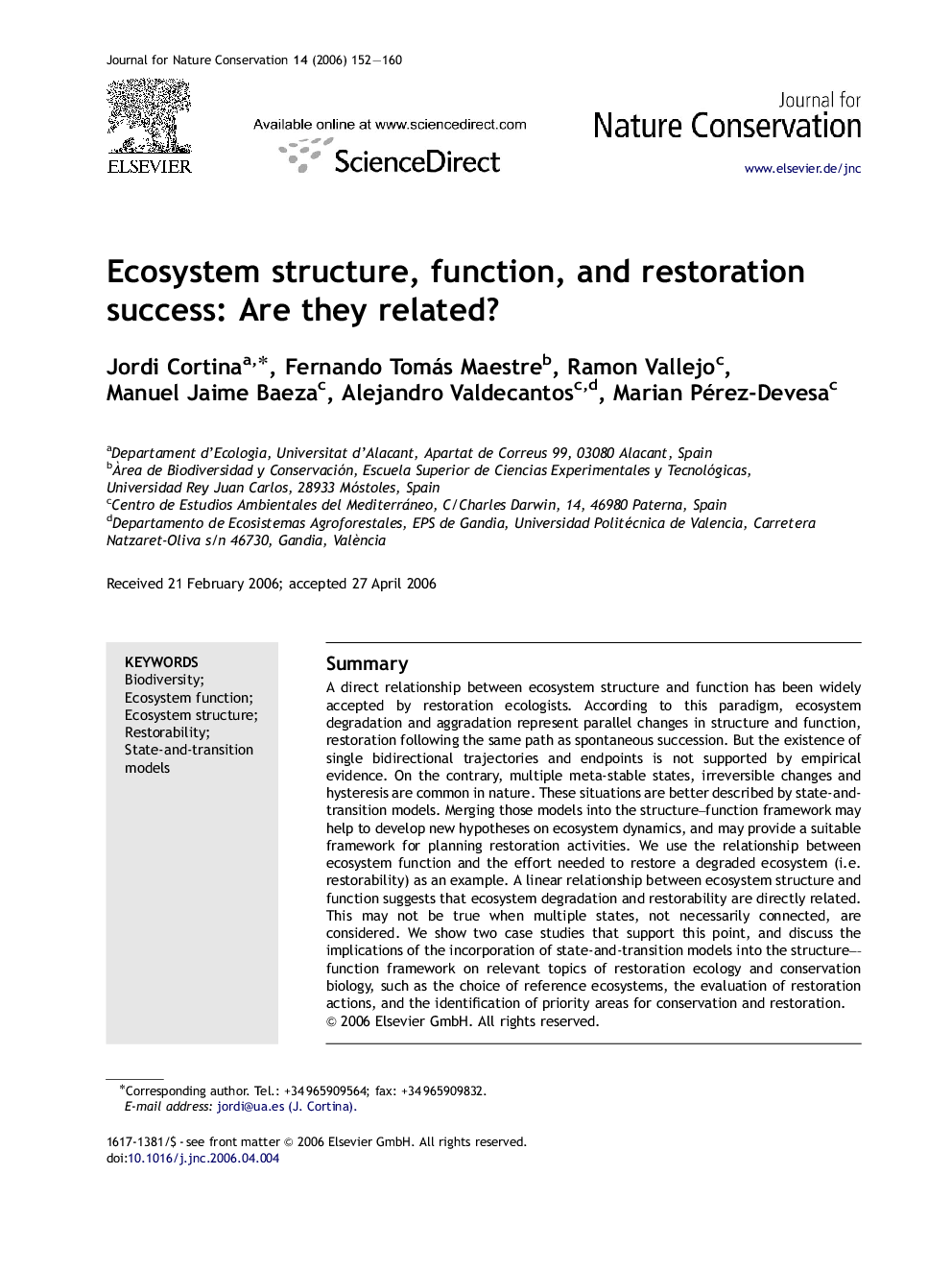| Article ID | Journal | Published Year | Pages | File Type |
|---|---|---|---|---|
| 4400162 | Journal for Nature Conservation | 2006 | 9 Pages |
SummaryA direct relationship between ecosystem structure and function has been widely accepted by restoration ecologists. According to this paradigm, ecosystem degradation and aggradation represent parallel changes in structure and function, restoration following the same path as spontaneous succession. But the existence of single bidirectional trajectories and endpoints is not supported by empirical evidence. On the contrary, multiple meta-stable states, irreversible changes and hysteresis are common in nature. These situations are better described by state-and-transition models. Merging those models into the structure–function framework may help to develop new hypotheses on ecosystem dynamics, and may provide a suitable framework for planning restoration activities. We use the relationship between ecosystem function and the effort needed to restore a degraded ecosystem (i.e. restorability) as an example. A linear relationship between ecosystem structure and function suggests that ecosystem degradation and restorability are directly related. This may not be true when multiple states, not necessarily connected, are considered. We show two case studies that support this point, and discuss the implications of the incorporation of state-and-transition models into the structure–function framework on relevant topics of restoration ecology and conservation biology, such as the choice of reference ecosystems, the evaluation of restoration actions, and the identification of priority areas for conservation and restoration.
